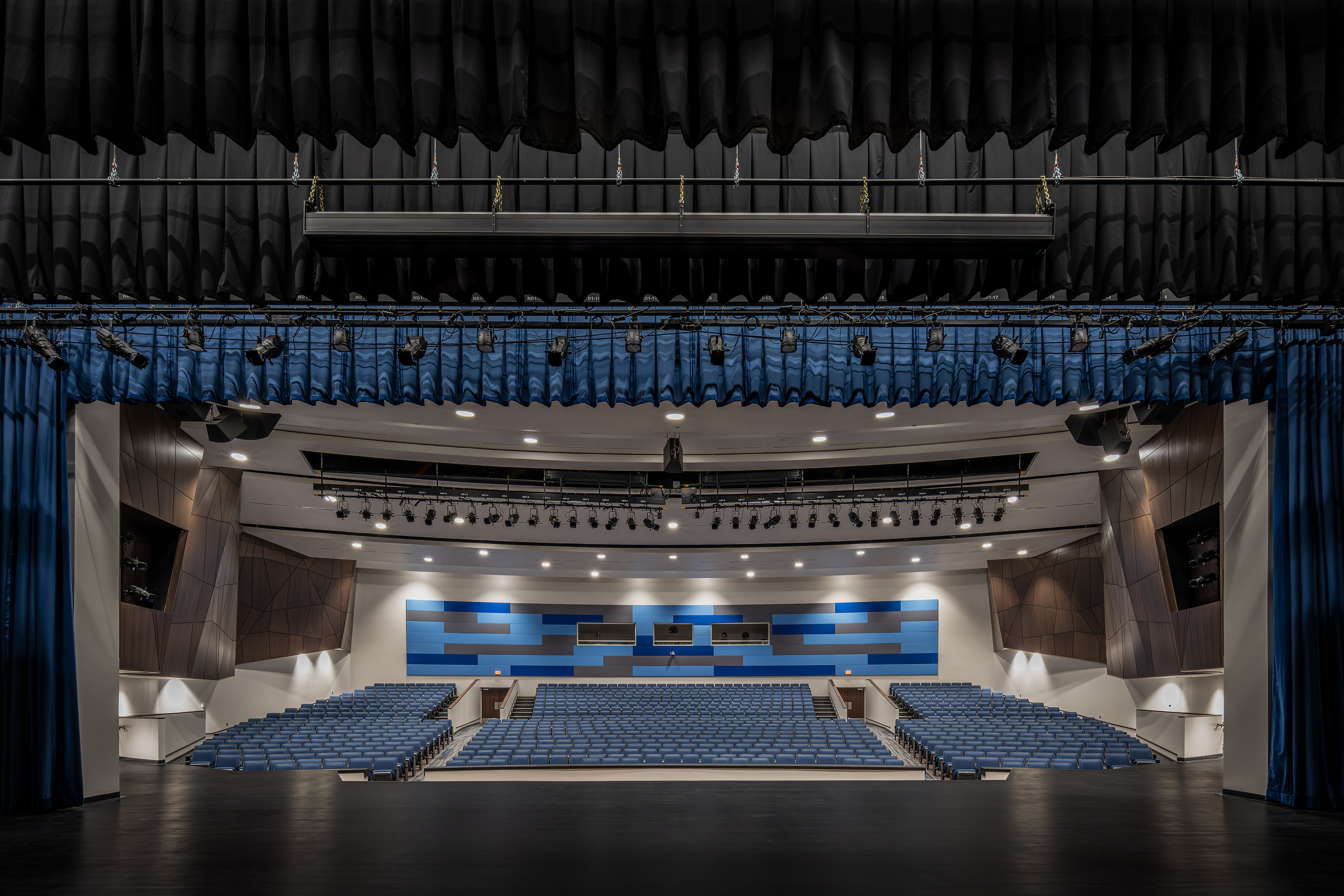Photo: Newsome High School in Hillsborough County underwent a major transformation through a phased approach that included constructing a new auditorium adjacent to the existing school. | Photo Credit (all): Skanska
By Daniel Abou-Jaoude
Florida’s school districts are facing unprecedented demand for new school facilities, expansions and renovations. Fueled by steady population growth and shifting demographics, school boards across the state are expanding their educational infrastructure to serve both current students and those expected to enroll in the coming years. Last year, Florida’s K-12 schools had more than 3.2 million students enrolled, with significant increases seen in suburban, urban and rural areas alike. That number is only expected to grow, with recent reports projecting that Florida’s population could increase by 1.4 million people by 2030, further intensifying the need for new and improved school facilities.
In some areas, schools are situated in neighborhoods where no land is available for new campuses, forcing districts to prioritize renovations or complete rebuilds. As demand shows no signs of slowing, close collaboration between school districts and experienced construction partners will be essential to delivering the next generation of learning environments across the state.
Balancing New Construction with Major Renovations
When aging schools reach the limits of what renovations can achieve, full demolitions and rebuilds often become necessary to provide the kinds of facilities that meet today’s educational standards. Skanska, which has completed more than 160 K-12 projects across Florida over the past 20 years, has seen firsthand how districts must balance preservation with modernization as they plan for long-term growth.
For example, Newsome High School in Hillsborough County underwent a major transformation through a phased approach that included constructing a new auditorium adjacent to the existing school, followed by a full conversion of the original auditorium into modern classrooms. These types of projects require extensive coordination with school administrators and faculty to minimize disruptions to daily operations.
Prioritizing Safety on Active Campuses

Working on active school campuses presents unique challenges that demand careful planning and constant communication. At Buffalo Creek Middle School in Manatee County, Skanska constructed a new two-story media center, converted the former media center into new classrooms and renovated existing facilities while students attended classes nearby. Safety is always the top priority. It is paramount to adhere to safety and security guidelines such as dedicated entry and exit points, and clearly marked separation zones between active construction areas and educational spaces.
This ensures students and teachers can continue learning without interruption. At Collins PK-8 in Hillsborough County, construction across six buildings on an active school campus created a complex web of challenges including dewatering an existing pond with 24/7 pumps that exceeded the allowed decibel levels for noise. Through close coordination with school leaders and surrounding neighbors, the firm constructed temporary sound walls to contain the noise and help minimize the impact. Building Strong Partnerships with School Districts Open lines of communication help identify potential challenges before they disrupt project schedules or school operations. Skanska emphasizes the importance of engaging with administrators and curriculum department heads early, hosting site tours for staff and students, and keeping all impacted stakeholders informed. In certain schools, the company issues a community newsletter to keep parents, staff, and neighbors informed about project milestones, potential impacts, and progress throughout the construction timeline.
“As the seventh largest school district in the nation, these projects are investments in the future of education across our growing school district,” said Chris Farkas, Deputy Superintendent for Hillsborough County Public Schools. “Maintaining close collaboration with construction partners throughout these complex projects ensures we can deliver future-ready learning environments that reflect the evolving needs of our students and communities.”
Learn more about how projects like NeoCity Academy in Ocsceola County prepare students for future academic and professional environments, in the July/August issue of School Construction News.
Daniel Abou-Jaoude is Vice President for Skanska USA Building.


